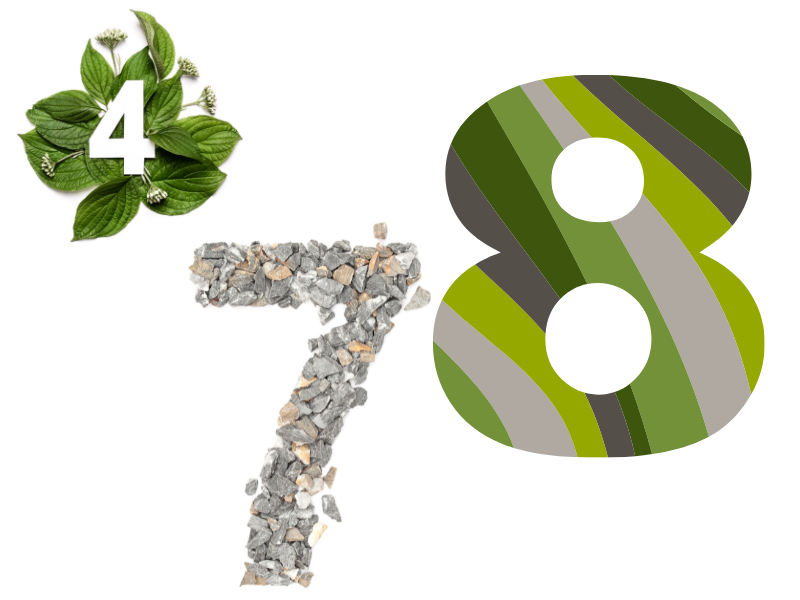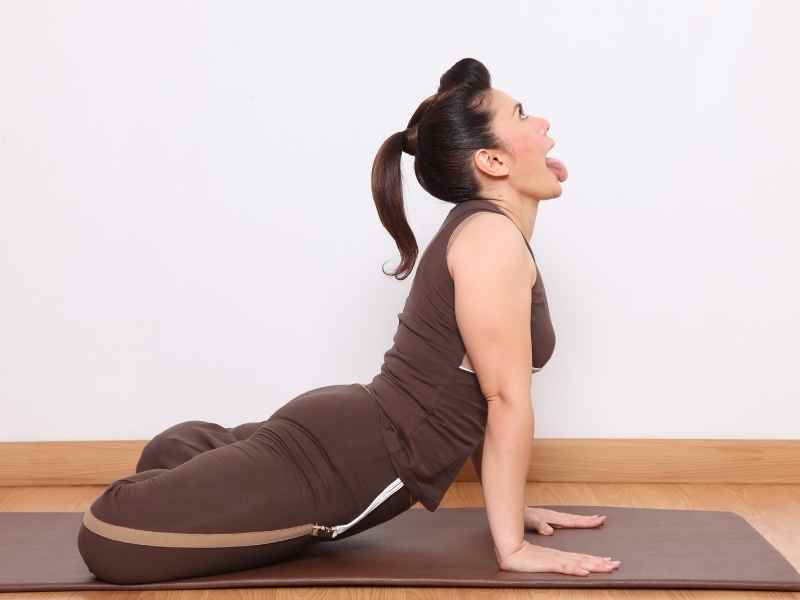Breathing Exercises for Anytime or with Your HUSO

The importance of the breath + breathing exercises
Did you know that most people in Western society breathe too shallowly? This shallow breathing habit contributes to feelings of anxiety. Breathing exercises can help.
Think about how you breathe when faced with a life-threatening situation. You go into fight or flight mode: shallow breathing is a hallmark sign of this response. It is the body’s way of increasing oxygen intake rapidly to prepare to run away from a possible dangerous situation or to engage in defense measures. Other signs of the fight or flight mechanism includes elevated heart rate, increased blood flow to legs, arms and extremities, and higher cortisol (adrenaline) levels.
In today’s hectic world, the fight or flight response can become the norm. The body doesn’t differentiate whether you’re being chased by a lion or if you missed an important deadline and realized it too late, or if you narrowly missed an oncoming car on your way to work. Any way you look at it, your body enters fight or flight mode. If you’re not careful, you could face stressful situations several times per day and constantly be in this stressed state.
Breathing Exercises can trigger the Relaxation Response
One great way to combat the effects from the fight or flight response is to practice different breathing exercises. Deep, intentional breathing balances oxygen and carbon dioxide levels in your system. A breathwork practice triggers the relaxation response in the body, the opposite of the fight or flight response.
Over time, deep breathing techniques can help you to sleep better, experience less drama in your daily life, and become more responsive to life’s events, rather than reacting to them, as well as developing a lighter attitude overall. Perhaps you’ll even notice more energy and better overall health.
Pairing these breathing exercises with using HUSO only increases the benefits. Imagine immersing yourself in a sound bath, with the vibrations from the pads relaxing your nervous system, and incorporating deep breaths into your session. Real relaxation is the result, as if you stepped out of your own spa!
Before you begin any of these breathing exercises with HUSO, take a look at some of these useful tips to get the most out of your sound healing session.
Turn down the volume such that you can hear your breath over the program sounds - about level 8
Sit in meditation pose (back straight, legs crossed) or in a chair. Avoid laying down; these exercises are most effective when you are in a sitting position
We have suggested programs to try with each breath, but feel free to experiment with other programs on your own

4-7-8 Breath
The 4-7-8 breath is a great practice for people experiencing acute anxiety. By repeating the 4-7-8 breath several times, you bring more oxygen to the blood and breathe out more carbon dioxide. It helps bring you into the present moment almost immediately.
How to do it
The method is simple. First breathe out as much as you can - until you can no longer breathe out any more air. Second, breathe into your belly through the nose for four seconds. Hold the breath for a count of seven. Finally, breathe out completely from the mouth through pursed lips (almost like you’re going to whistle) for eight seconds.
Repeat several times. You can do this breathing exercise anytime you need that feeling of calm. If you want to make a habit of it and accumulate maximum benefits, perform this exercise twice a day.
Benefits
This kind of breathwork technique works in several ways. By deliberately slowing your breathing, you are telling the body that it’s okay to relax. Your brain releases feel-good hormones such as dopamine and oxytocin into your bloodstream. You’re also teaching your mind and body to pause - and thereby become more responsive - when you’re feeling stressed or are in an exasperating situation. Over the long term, it changes your breathing patterns so that a slower, deeper breath becomes the norm for you.
HUSO Program suggestions to try with this breath:
If you practice this with HUSO(whether you have the Home Unit or the Wireless Wearables), let yourself focus on the breath and let the healing sounds and vibrations do their thing in the background. Practice this technique at the beginning of the program.
SOOTHE is a program designed to create an envelope of safety to allow for the reduction of fear and other anxious thoughts. By using the 4-7-8 in tandem with SOOTHE, you can help send anxious thoughts on their way, leaving the mind in a more restful state.
RELAX - this is already a great program to help bring about deep relaxation. By pairing a relaxing breath practice with the RELAX program, the possibility of profound relaxation is very real.
Lion's Breath

If you’re feeling like you need to let out pent up feelings of anger or frustration, this can be the perfect breath practice to try. It’s important to do this breath with full attention and an intention to allow yourself to feel more lighthearted. This breath practice might feel silly at first, but it’s a great way to diffuse any tension. It also loosens muscles around the throat, jaw and cheeks. You can choose to make the accompanying sound or not. Of course, we’re all about sound therapy here at HUSO, and so we definitely encourage you to bring those vocal cords into action. This particular breath can also get energy moving in your body and warm you up.
How to do it
First, choose your pose. The lion’s breath pairs very well with the lion pose in yoga (simhasana): start out on your knees, cross your right foot over the left and then rest your rear over your feet. Alternatively, sit with your back straight in a chair with your feet on the floor, or in meditation pose. This is especially true if you find it difficult to cross your legs or have issues with your knees.
Next, no matter the position you assume, rest your hands on your knees, and straighten out the arms.
When you’re ready, inhale through the nose into the belly.
As you exhale, open your mouth, stick out your tongue like you’re going to touch your chin. Breathe out strongly while whispering, “haaaaaa.”
Inhale again while returning the tongue to its normal position and close the mouth.
Optional: when you exhale, look up toward your forehead, between the eyebrows. As you get more practice with this exercise, you’ll want to incorporate this.
Repeat this breath at least three times.
Benefits
The lion's breath makes you focus on exhaling your stresses. You channel negative feelings outside of the body because you’re using the breath in a slow, deliberate way that acts to increase oxygen levels in the blood while helping you to symbolically shed your frustrations. The nature of this breath invites a little silliness into your day, as well. Looking up toward the forehead helps you to hone your concentration and focus.
HUSO Program suggestion:
If you use this with HUSO, skip doing the yoga pose that goes with it and either sit in a chair or sit in meditation pose. Practice this breath at the beginning of the program.
SERENITY - this program is designed to help quiet the mind without putting you to sleep. The lion's breath complements SERENITY by helping you focus and quiet the mind through an audible breath. (Just do the lion's breath before or after listening.)
RELEASE is a great program to try with this breath practice because it is designed to help you resolve issues and let them go while practicing the emotion-shedding qualities of the lion’s breath.
Bee Breath

This breath is good for those who love sound healing therapy. You really incorporate sound into this breath. This is another practice that is great for anyone seeking more calm over time, but also can be used in moments when anxiety or stress build up.
How to do it
Sit in a chair with your feet flat on the floor, or in meditation pose. Close your mouth (but keep the tongue and jaw relaxed). Place the tip of the tongue on the roof of your mouth where the back of teeth meet the gumline. Inhale through the nostrils into your belly. Exhale back through the nose, while you make a soft humming sound. Exhale as much as you can without straining.
Inhale and repeat several times. Work up to 10 bee breaths at a time.
Benefits
One interesting thing about the bee breath is that it helps the body, specifically the paranasal sinuses, to produce more nitric oxide. This is also known as laughing gas. Other beneficial hormones are released, too. This aids in helping the body systemically, such as with lowering blood pressure, promoting relaxation, strengthening the vocal cords, and increasing overall well-being. The act of humming is part of what helps the body to release nitric oxide and create natural healing vibrations. Nitric oxide has antiviral and anti-microbial properties, and as such, can help you increase your natural immunity.
HUSO Program Suggestion:
If you’re using this with HUSO, you can try to match your humming sound with the sound of the program as you exhale. Try not to worry about being off key or getting it “perfect.” The idea is just to let yourself hum comfortably. Practice this technique at the beginning of the program.
CALM is a great program for reducing that frenzied feeling. Pairing with the bee breath, you’re getting even more benefit from sound healing therapy.
COMFORT - can help you wash away worry and sooth grief states. When paired with the bee breath, you use the humming sound as an additional way to expel worry and grief, leaving you more balanced and relaxed.
Breath of Fire
Breath of fire is an energizing breath practice. You build up body heat performing this breath. Because of that, you can feel more energized and it is a great way to power your way through when you feel drowsy in the afternoons but don’t have time to take a nap.
Because you’re actively contracting abdominal muscles, you massage the internal organs that can help improve digestion. Not surprisingly, this breath is also quite cleansing for the body. You can do this breath any time - while working, exercising, or even in lieu of drinking coffee.
How to do it
The first thing to remember is that you want to focus on the exhale while letting your body naturally take care of the inhale. However, the inhale and exhale should be equal. When you first try this, start with a slow inhale and an equally slow, but forceful exhale. Try it for 30 seconds. As you get better at it, and get the feel for contracting your abdominal muscles to help you forcefully exhale, you can speed up the pace of your breath and work up to as much as ten minutes. If you feel tingly after trying this, this is good - it’s one of the fun effects of this breath. However, if you get too dizzy, stop and slow everything down or try again some other time.
For this breath practice, it’s particularly important to have a straight spine because it serves as the core against which you can do effective abdominal contractions. If you have never done this breath before, try placing your hand on your belly and breathing such that you move just your belly with your hand on it. Then try a forceful exhale. Your belly should contract quickly, and bring your hand resting on it along, too.
Now that you have practiced...
Once you have gotten a feel for breathing in and forcefully exhaling, you’re ready to try the exercise.
Begin with a slow inhale and expand your belly. Exhale forcefully by using your abdomen as a sort of bellows (your breath will be audible) but do your best to keep the exhale equal to the length of your inhale. Do this for several breaths while keeping a rhythm. Try to do this without pausing between breaths. Remember, go slowly as you’re getting the hang of it.
Once you have a rhythm established and are more comfortable,, you can start to increase the pace of the inhale and exhale, aiming for about 2 breaths per second. Try it for 30 seconds. On your next session, try to build up to one minute doing this. Eventually, with practice, you can build up to 10 minutes.
Benefits
This practice helps to really balance and increase your oxygen intake. Because of the abdominal movements, your blood gets pumping and it helps with circulation. With improved circulation, this breath practice creates a detoxifying effect. The forceful exhale can help you symbolically shed negative emotions. It helps strengthen the abdominal wall and spine. This breath pattern can also help deliver more oxygen to the brain and help you feel more awake.
HUSO Program suggestion:
If you’re using this with HUSO, be sure to turn the volume down enough so you can clearly hear your exhalations. Sit with your back straight and use this breath practice at the beginning of the program.
INTEGRATE - because this program already harmonizes body, mind and spirit for well-being, the Breath of Fire can further aid in harmonization and integration of body systems.
OPENING also pairs well with Breath of Fire. The OPENING program encourages mental perception and expansion of the body’s energy centers while the Breath of Fire promotes this energy expansion.
Ocean Breath

This is also known as the Ujjayi Breath. This is another practice where you make a sound upon exhalation, but it sounds like an ocean wave or like someone exhaling as they’re sleeping (not like snoring though). If that’s hard to visualize, perhaps think of Darth Vader in Star Wars breathing through his helmet.
This is a great exercise for when you’re stressed, or want to find more balance in your day. It’s also a great introduction to a meditation practice if you have never meditated before.
How to do it
Sit in a chair or in meditation pose.
For this exercise, the mouth remains closed. Tuck your chin in and constrict your throat, and inhale into your belly. You won’t hear anything on the inhale, but on the exhale, you’ll hear yourself make a gentle whooshing sound if you’re doing it correctly. You don’t want to constrict the throat too much - only use a bit of effort - just enough so that you can hear the gentle sound of the ocean as you breathe out. You want the body to stay relaxed and the breath to stay smooth. Keep the inhalations and exhalations as even as you can.
Benefits
The balanced breathing rhythm used in this technique helps relieve tension and bring about systemic relaxation. As with the other breath practices, this also increases blood oxygen levels and lowers blood pressure. With your focus on making ocean wave sounds, the mind settles down enough to elevate your sense of well-being. It also helps increase your ability to focus and concentrate.
HUSO Program suggestion:
If you use HUSO with the ocean breath, sit with your back straight - either in a chair or in meditation pose. You can practice this breath throughout the 30-minute program.
OCEANA - This program facilitates the connection with life’s mystery and our fluid nature. When paired with the ocean breath, you’re compounding this connection which will help you become more fluid and flexible in your everyday life.
FOCUS - The focus program allows for better problem-solving and synthesis of new information. The ocean breath can help increase your focus and concentration. Combining this breathwork exercise with the FOCUS program will help you achieve even more benefit. The rhythms of the breath with the sounds of the program bring you into a more relaxed brainwave state where creativity and solutions to challenges can happen.
What are you waiting for? You can try these breathing exercises anytime on their own, or pair them up with your HUSO for added benefit.

